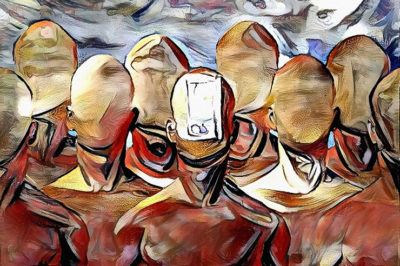This article was originally published in New Dawn 131 (Mar-Apr 2012) and reprinted in New Dawn Special Issue Vol 13 No 2 (April 2019)
On 2 January 1885, a mental patient named Louis Vivet, suffering from dédoublement (“double consciousness or “split personality”) escaped from the famous Bicêtre asylum in Paris. A month later he was rounded up and transferred to the military hospital in Rochefort, France.
At Bicêtre, Vivet had suffered from having one alternate personality (or autre, “other”). In July 1885, his physicians at Rochefort reported that he now had eight personalities. In Rewriting the Soul: Multiple Personality and the Sciences of Memory (University of Princeton Press, 1995), Canadian philosopher Ian Hacking writes, “Our phrase ‘multiple personality’ appeared in print in England in a year, explicitly to describe Louis Vivet.”1 Multiple personality disorder (MPD) – today usually referred to as dissociate identity disorder (DID) – had entered history.
At Bicêtre, Vivet had displayed all the appalling symptoms of what was called, in full, grande hysterie chez l’homme avec dédoublement de la personnalité [“major hysteria in a person, with split personality”]. At Rochefort, he presented all the same symptoms, but more so. Dr Hacking describes him as suffering from, “Every kind of pain, paralysis, anesthesia, contracture, muscular spasm, hyperesthesia, mutism, rash, bleeding, coughing, vomiting, convulsing; every kind of epileptic seizure, catatonia, somnambulism, Saint Vitus’ dance (chorea), arc de cercle (in which the patient lies horizontal, face up, with a totally arched back), language impairment, animalisation (the patient becomes a dog), machinisation (the patient becomes a steam locomotive)… constipation, anorexia, bulimia, alcoholism, debility”2 and much more.

Vivet’s physicians believed, as we would today, that his condition stemmed from childhood abuse. Vivet was the son of an alcoholic prostitute who beat and neglected him. He ran away from home at eight, committed theft, and was put in prison. This pattern of crime and punishment was repeated again and again, accompanied by increasing physical and mental hysteria. At Rochefort, Vivet shifted easily and unexpectedly between his eight personalities which ranged from pious and docile to violent and convulsive. He slowly began to recover. In about 1890 he was released in reasonably stable condition. From then on he is lost to history.3
Over the next seventy years, only a dozen or so cases of MPD were reported and treated, mostly in France. Then, in 1956, the release of the movie The Three Faces of Eve, supposedly based on a true story, starring Joanne Woodward as Eve and Lee J. Cobb as the psychiatrist, caused a mild stir with its depiction of a woman with three personalities. There was a flurry of cases of MPD. In 1976, the film Sybil, also ostensibly based on an autobiography – Sybil: The Classic True Story of a Woman Possessed by Sixteen Personalities – starring Sally Fields as Sybil and Joanne Woodward as the psychiatrist,created a sensation. In the twenty years between the two films, there had been growing public concern over child abuse. This set the stage for an enthusiastic reception for Sybil. Subsequently, therapists began to uncover dozens, even hundreds, of “alters” in their clients. The number of people suffering from MPD/DID rose exponentially until, in the mid-1990s, researchers could claim as many as 100,000 cases.
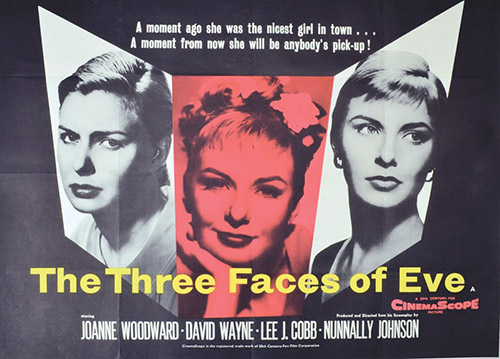
This story of the abrupt proliferation of incidences of MPD, beginning toward the end of the last century and following on the heels of a trickle of such cases over the preceding seventy to eighty years, is a well-known one. What isn’t well-known is that the same brief window of time (estimated by Dr Hacking at 1874-1886) that saw the birth of multiple personality disorder also saw the birth of three other altered-state-of-consciousness phenomena: past life recall; recall of near-death experiences (NDEs); and UFO sightings (which came to include alien abductions).
Moreover, if we draw lines on a graph tracing the proliferation of incidences of the four phenomena over the next 100-120 years – until about 2000 – we observe that the four follow almost the same path. The four lines virtually pile up on top of each other. In other words, all four of the phenomena make their appearance in roughly 1874-1886, trail along with little more than a smattering of occurrences for the next 60-80 years, and then – usually sparked off by a highly dramatic public event such as the film Sybil in the case of MPD/DID – abruptly proliferate at an exponential rate, approaching, in the 1990s, figures as high as 100,000.
Does this mean that all four phenomena are just different facets of the same phenomenon?
All four have one thing in common (and this is true of the alien abduction side of UFO sightings if it is not true of the sightings themselves): They are recalled experiences. They must be remembered to be brought into being. Our awareness of them is dependent on the existence of the faculty of memory – that is, memory as a storehouse. This seems obvious in the case of MPD/DID, where only one personality manifests at one time, and the rest must remain in storage, “in our memory.” But it’s also the case with past-life recall; a past life can only be recalled if it, too, is stored somewhere “in memory.” And near-death experiences can only be remembered – assuming, that is, that the experiencer can be resuscitated – if they’ve been stored, somehow, somewhere in our memory.
The phenomena of “missing time” is common to alien abductions; abductees find they can’t account for hours, even days, of their time, until, at a certain point – usually when they’re undergoing therapy – they recall that during that missing time they were whisked away to a UFO. (The experience of seeing a UFO in real time doesn’t require “memory.”)
Ian Hacking asserts in Rewriting the Soul that the concept of memory as a storehouse only came into being just after 1874, and was invented by the scientists, and their colleagues, who were treating Louis Rivet. The concept was invented because the science of that time had proven – or so it was thought – that the soul does not exist. Religion now had sole ownership of the concept of the soul. Only the church had the right to inquire into its nature. Scientists, finding themselves without an object they could examine as they had examined the soul, came up with an alternate concept, and this was memory as a storehouse. That was the real soul; its study would yield an equal portion of truth.
As Dr Hacking writes, “Memory, already regarded as a criterion of personal identity, became a scientific key to the soul, so that by investigating memory (to find out its facts) one would conquer the spiritual domain of the soul and replace it by a surrogate, knowledge about memory.”4
Should we infer from this that the phenomena of MPD/DID, past-life recall, recall of NDEs, and alien abductions into UFOs are merely made-up realities, figments of our imagination? Ian Hacking certainly believes this is true as regards the soaring growth of incidences of multiple personality disorder/dissociative personality disorder over the past 20-30 years.
But, first: to try to follow the Canadian philosopher’s line of reasoning, let’s see if it’s true that all four of these phenomena really do trace out roughly the same growth curve, coming out of nowhere in 1874-1886, lying fallow for the next 60-80 years, and then, as the twentieth century comes to a close, bursting forth in a wild proliferation of incidences.
UFOs & Alien Abductions
France’s Jacques Vallée, writing in Passport to Magonia: On UFOs, Folklore, and Parallel Worlds (1993; “Magonia” is a cloud realm in a French Medieval folk tale), is the most eminent of a school of UFO researchers who believe UFOs go back a very long way in our history. He holds that aliens have visited us for millennia as angels, succubi, fairies, leprechauns, and so forth, and that their trysts with us in the past often resembled the alien abduction encounters of today. There are those who believe, for example, that medieval tales of persons’ being flown to witches’ sabbaths where the Devil rapes them with an ice-cold cast-iron-like penis, are really early accounts of abductees’ being whirled away to UFOs where their orifices are violated by ice-cold metal probes wielded by alien researchers.5
Temple University History Professor Dr David Jacobs is a prominent member of the other, “modernist,” school of UFO research. He insists that the earliest reported UFO sightings took place between November 1886 and May 1887, in western and mid-western states of the US, when thousands of people claimed they saw dirigible-type cylindrical airships sailing through the skies. The dates place this sighting at the upper end of Dr Hacking’s “memory creation” window of 1874-1886; in fact, the sightings took place about the same time Louis Vivet was being examined by his physicians at Rochefort. From May 1887 on, nothing resembling a UFO (with the exception of “foo-fighters,” phantom disks said to pursue Allied fighter jets near the end of World War Two) was sighted until 24 June 1947, when aircraft pilot Kenneth Arnold reported observing nine saucer-like vehicles hurtling through the skies above Mt. Rainier, Washington. This headline-grabbing event, as powerful in impact as the release of the film Sybil which preceded the explosion of incidences of MPD, was the starting point for an equally explosive proliferation of UFO sightings, which by the end of the century were said to number in the millions.

In the 1970s, the phenomenon of “alien abductions” began to spin off from that of UFO sightings. Soon, almost as many alien abductions as UFO sightings were being reported. Whitley Strieber, author of Communion, and Anne Strieber, asserted in The Communion Letters (1997) that by the mid-1990s the number of alien abductions was probably as high as a quarter-of-a-million. In Abduction (1994), Pulitzer Prize-winning Harvard psychiatrist John E. Mack reported that “polls of the prevalence of the UFO abduction phenomenon in the United States, including a survey of nearly six thousand Americans conducted by the Roper organisation between July and September 1991, indicate that from several hundred thousand to several million Americans may have had abduction or abduction-related experiences.”6 Dr Jacobs, analysing the same Roper report, put the figure, conservatively in his view, at five million.
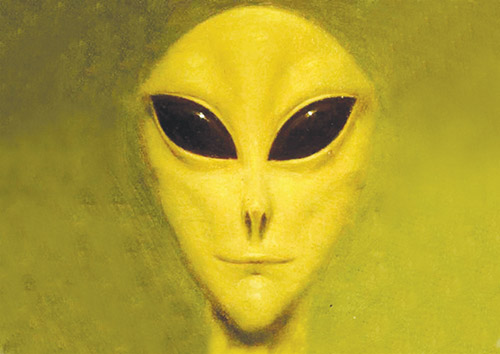
Past Life Regression & NDEs
The growth rate for the recall of near-death experiences (NDEs) kept pace with those traced out by incidences of MPD and alien abductions. Although in Otherworldly Journeys (1987), Harvard theologian Carol Zaleski compiled tales of ostensible NDEs from different cultures throughout history, many of these accounts probably describe quite different phenomena. The reporting of NDEs really only began when medical science had advanced to the point where people could be resuscitated after a significant length of time “among the dead.” It’s noteworthy that H.G. Wells published two short stories, “Under the Knife,” in 1896, and “The Door in the Wall,” in 1906 – the first only a decade, the second two decades, after Dr Hacking’s window for creation of the concept of memory – which eerily describe NDEs, the second with an exactness of detail usually found only in accounts of NDEs made possible by post-1970 resuscitation methods. Wells’s stories probably reflect unreported real events. From that point on, there are hardly any reports of NDEs until at least the early 1960s. By the late 1960s, the number of such reports was expanding exponentially, and the experience was becoming almost commonplace. According to Gallup polls, by 1991 the figure had risen to eight million. With continuing improvements in resuscitation technology, the figure would continue to rise.
The results of past-life regression therapy – hypnotising clients so they can recover their “past lives” – aren’t always reported, and sometimes the recollection of past lives is hidden in a thicket of broader psychological and psychiatric issues. Yet it’s possible to date the first recorded incidence of this fourth altered state of consciousness to just a few years after the close of Dr Hacking’s memory-as-storehouse-invention window. One of the earliest cases is that of the Swiss medium Hélène Smith, who, in 1895-1897, under the direction of philosopher-psychologist Théodore Flournoy, recalled past lives as Marie Antoinette and an East Indian princess. (These cases are usually regarded today as examples of MPD.) Smith was a medium; the “seances” were immortalised in Dr Flournoy’s From India to the Planet Mars (1899). In Les Vies Successives (1911), Colonel Albert de Rochas described turn-of-the-century experiments in Paris on nineteen persons whose consciousness was regressed back through birth to an existence as a discarnate spirit and then to one or two of their past lives.7 In The Belief in a Life after Death (1961), C.J. Ducasse chronicledsimilar experiments carried out at almost the same time by a group of physicians in New York City.8
Then, for the next 60-70 years, travellers in search of reports of past-life recall will find themselves labouring across a vast, arid desert, with only one – though notable – oasis: Asa Ray Martin (1887-1949), a business school owner in Sharon, Ohio, who was the first American to regularly practice past-life regression therapy. In Researches in Reincarnation and Beyond (1942),Martin describes how over a period of twelve years he regressed 500 subjects, achieving remarkable results that included enabling a number of them to “talk, sing, and chant in languages of which they had no knowledge – Chinese, Arabic, German, for example – and their grammar and syntax would reflect their past personalities.”9 (It was at about this time that Edgar Cayce began his remarkable career in which past-life recall played a small, if vital, role.)
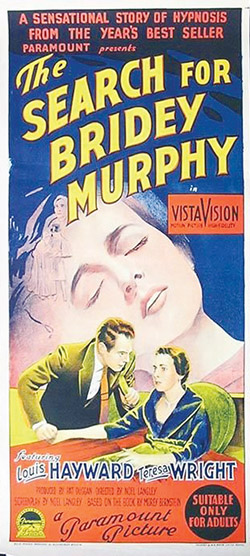
The desert ends abruptly in 1956, with a towering, mountain-sized, past-life recall public event. This is the publication of The Search for Bridey Murphy by hypnotherapist Morey Bernstein. Bridey Murphy was a nineteenth-century Irishwoman who was a past lifetime of a Colorado housewife, Ruth Simmons, whom Bernstein had regressed hypnotically. Simmons convincingly recalled many details of Murphy’s life; historical research seemed to bear out these details.
The book and subsequent movie struck a nerve. People became intensely interested in reincarnation. Therapists became involved in past-life regression therapy. The curve for the number of past-life recalls shot upward at an exponential rate, until, in 1990, Hans TenDam could report in Exploring Reincarnation that “[therapist Joe] Fisher’s estimate that past-life therapy has since been responsible for healing hundreds of thousands of people… may be an overstatement, but the total number may be well towards 100,000.”10 By the late 1990s, the figure was probably approaching half-a-million: one Vancouver, B.C., therapist declared in 1994 that she had personally regressed 10,000 clients to past lives. Though past-life regression therapy has to some extent shifted away from the US, the figure, as we’ll see, remains high.
These four phenomena, aping one another in distinctive growth patterns that first crawl slowly forward, then suddenly soar upward, constitute an extraordinary plenitude of altered-state-of-consciousness experiences. Would they never have come into existence had not a group of French physicians and their colleagues decided, late in the nineteenth century, to devise a way of understanding memory that would give them the means to gain knowledge of the soul?
Dr Hacking makes it clear he doesn’t believe that men and women had, before 1874, no knowledge of the nature of memory. He writes: “I do not mean that we began to think about memory only in the late nineteenth century. The previous chapter [of Rewriting the Soul] dipped into the art of memory and listened to [eighteenth-century English philosopher John] Locke’s moving observation that episodes from the past ‘very often are roused and tumbled out of their dark cells into open daylight, by turbulent and tempestuous passions; our affections bringing ideas to our memories, which had otherwise lain quiet and unrewarded’. But there was little conception of a knowledge about memory before the nineteenth century…. [It was roughly in 1874-1886 that] the depth knowledge, the knowledge that there are facts about memory, came into being. Why did it come into being then? Because the sciences of memory could serve as a public forum for something of which science could not openly speak. There could be no science of the soul. So there came to be a science of memory.”11 This science of memory was based on the notion that memory is a storehouse, preserving in permanent form material as meaningful as that which the Church claimed to uncover in the soul.
Multiple Personality Disorder/DID
Dr Hacking’s book focuses only on the birth, the painfully slow progress, and the sudden extraordinary flowering, of incidences of multiple personality disorder/dissociative identity disorder. He ignores the three other varieties of recall of altered states of consciousness that are the subject matter of this article. He makes it clear that he believes the rapid rise of cases of MPD/DID is a “copycat” phenomenon. The film Sybil didn’t give a name to the state of being possessed by “alters” that was already afflicting many; rather, the time was ripe for people to be so overpoweringly influenced by the film that they set about manufacturing a definition of themselves as afflicted by MPD. “Feedback” between therapist and client was a vital element in this process (as it had been a vital, “co-creative,” element in the relationship of Louis Vivet and his doctors); therapist and client together “co-created” the state of being called multiple personality disorder.
Various cultural phenomena, particularly TV, were critical factors in the formation of MPD/DID. Dr Hacking writes: “Some really dysfunctional multiples going through a bad patch switch personalities very rapidly, each time assuming a new stock character. The effect is similar to that of switching TV channels by channel surfing. This impression is enhanced because patients with a great many alters often choose, for some of their personalities, the names of characters in sitcoms, soaps and crime series. It happens that TV remote controls became available in America just about the time that today’s florid multiples became abundant. I am not saying that multiples consciously act out television fantasies – or, at any rate, that they do so any more than the rest of us. We constantly mimic others.”12
The Canadian philosopher goes so far as to imply it was no accident that, at the same time that as many as 100 channels became available on TV, sufferers from MPD appeared who claimed to harbour as many as 100 alters, that is, other personalities.
Dr Hacking does not believe in the existence of an enduring soul. He seems to be, instead, a proponent of the modern-day theory of the social construction of reality. This theory holds that ‘reality’ does not exist. Physical ‘reality’, no less than social ‘reality’, is at bottom a social and linguistic construct. Scientific ‘knowledge’, far from being objective, reflects and encodes the dominant ideologies and power relations of the culture that produced it.
The Satanic Ritual Abuse Scare
There is one major cultural event of the past few decades that, in retrospect, seems clearly to have been a social construction of reality, and to bear out Dr Hacking’s contentions. This is the phenomenon of, in the words of Ontario’s Religious Tolerance website, “Satanic Ritual Abuse (SRA), [which] can be defined as the psychological, sexual, and/or physical assault forced on an unwilling human victim, and committed by one or more Satanists according to a prescribed ritual, the primary aim of which is to fulfil their need to worship the Christian devil, Satan.
“A ‘Satanic Panic’ swept the US and Canada, starting about 1980 and continuing until the late 1990s. It included beliefs that underground and sometimes inter-generational Satanic cults were murdering as many as 60,000 people per year. The panic died after 15 years because of lack of hard evidence that it ever existed as a significant problem. A survey by Redbook magazine in 1994 found that 70% of American adults believed in the existence of abusive Satanic cults. Thirty-two percent explained away the absence of hard evidence or other proof by believing that ‘the FBI and police ignore evidence because they don’t want to admit the cults exist’. There is a near consensus among investigators today that SRA is either nonexistent or occurs at an extremely low and undetectable level.”13
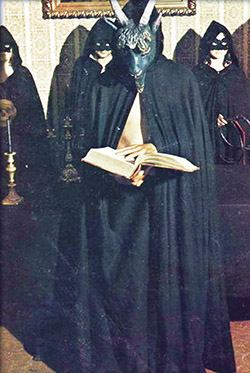
Past-life recall, NDE recall, and alien abduction came into being, endured, and burst into prominence in the same way and in the same time frame as MPD. Are these first three, then, merely different facets of the same altered-state-of-consciousness stream of reality that gave birth to the fourth? Are these three merely fabrications, products of the infinite suggestibility of humankind?
Dr Hacking would probably say yes. He would likely argue that Kenneth Arnold’s encounter with nine UFOs over Mt. Rainier in Washington in 1947 did not open people’s eyes to see clearly what they had been seeing all along (still less would he say that the UFOs seen by Arnold were the first in a steadily mounting wave of visitors from outer space). Instead, he would say that Arnold’s sighting, for reasons having to do with where society was at, at the time, struck at the heart of the vast impressionability of humankind; that we began, aided and abetted by each other, by the media, and by the rulers of society, to increasingly “make up” UFOs – and, not long afterward, to make up alien abductions. Dr Hacking would probably regard the publication of The Search for Bridey Murphy not as some explosive event opening us up to deeper parts of our psyche; rather, he would see the book as no more nor less than an irresistible invitation to dream, to create, to invent, to make believe that we are far vaster (in that we possess many lives) than we’d thought we were – to, in effect, “socially create” that reality.
Let’s pause here. Surely this isn’t the whole truth. There is a real world; its properties are not merely social constructs and facts. Evidence does matter. Wise men and women, while not attributing to UFOs, to past lifetimes, to near-death experiences, an ultimate nuts-and-bolts reality, have nevertheless glimpsed archetypal forms – other, different, powerful realities – lying behind and within these phenomena, realities that ensure them a permanence beyond the flux of transient phenomena.
C.J. Jung is one. John White writes, in “What Are UFOs?”, in New Dawn Special Issue 17: “In his book Flying Saucers: A Modern Myth of Things Seen in the Sky, Jung proposed that UFOs are symbolic projections of deep human yearnings for wholeness and transformation in the collective psyche of humanity. Without denying their physical nature – because, of course, UFOs have been photographed and tracked on radar – Jung speculated that UFOs are either our own psychic projections perceived objectively in the sky or they are the appearance of real objects which afford humans an opportunity to project mythological symbols from deep in the collective psyche.”14 White lists other ways of understanding the phenomena of UFO sightings and alien abductions. It is likewise possible to list other ways of understanding past-life recall and NDEs – ways that give these phenomena a profound if ultimately unknowable objective reality while making allowance for the infinite number of forms they seem to take in the face of humankind’s infinite ways of seeing.
Where are Memories Really Stored?
Could the “social construction” that was the invention of memory as a storehouse really have moulded our faculties of perception in such a way that we were able to invent the (otherwise non-existent) phenomena of MPD, past-lives, NDEs and alien abductions? This seems unlikely; and, besides, it has become increasingly clear in our time that the notion of memory as a storehouse is a limited, maybe an erroneous, one. This notion came into existence, as Dr Hacking suggests, at the end of the nineteenth century, as a political tool – “memoro-politics” – enabling scientists to pursue their deepest investigations despite the co-optation of the soul by the church. Increasingly in our time the notion is being put forward that memory is not only not stored in the brain, but it might not even be localised in the body. In Transplant Memories, Dr Michael Grosso writes of anomalous memories associated with transplant operations. He tells the story of Claire Sylvia, who “reports that after her heart and lung transplant she suddenly had cravings for foods she never liked before such as beer, green peppers, and chicken nuggets. Later, when she met her organ donor’s family, she learnt that the young man who gave her a new heart was indeed fond of these foods, and was actually carrying a container of chicken nuggets when he died. Tim, the donor, was possessed by a constant craving for action during his life; Claire, after her transplant, became unaccountably restless, and felt urges to travel in a manner quite unlike her pre-transplant self. She also found herself having dreams of beautiful women and flirting with other women; prior to her operation, she had no homosexual leanings.”15
Claire even dreamt of Tim, at a time when she didn’t know who her donor was and certainly not what he looked like. Dr Grosso asks: “What are we to make of these cognitive memories, which we can assume for the sake of argument to have been accurately reported? Transplant memories suggest that memory may occur apart from any coding, storage, and retrieval from the central nervous system. We haven’t the foggiest notion of how to make sense of this.”16 He cites further research that seems to indicate that no matter how much, or what parts, of the brain are removed, memory survives. Dr Grosso concludes with a wild speculation: “For all we know, the brain’s complete destruction will liberate, not annihilate, consciousness.”17
In “Intermediate States: Charles Fort’s Degrees of Reality,” Colin Bennett continues in the same vein, providing examples to show us that not only is memory not localised in the brain, but many other so-called “brain” functions may not be localised in the brain either. Among a number of other cases, he cites that of Pacho Penaloza, of La Paz, Bolivia, who “blasted off a quarter of his brain and a third of his skull when mishandling a pistol in 1984. He was in a coma for three months, his right side was expected to be permanently paralysed, and he was also expected to be deprived of speech. A new skull-cover was reconstructed by Minnesota plastic surgeons Joseph Skow and Frank Pilney, using a section of bone taken from a rib and another part of Pacho’s skull, and a scalp-flip stitched into place. Apart from a clenched fist and a limp, Pacho made a complete recovery.”18
It seems that (as Ian Hacking suggests) the conceptualisation by Vivet’s doctors of memory (which they were certain was contained in the brain) as a faculty of storage, was a more or less arbitrary one, chosen solely to give the doctors a path to knowledge of the soul. Increasingly, it seems that memory doesn’t need a physical container at all. Perhaps it abides as a kind of mist surrounding the body – or perhaps as a mist extending throughout the universe. The ancient concept of the Akashic files – a higher reality in which all human knowledge is stored – may not be so far-fetched after all.
Altered States of Consciousness Today
What does our altered states-of-consciousness graph look like today? In the first decade of the twenty-first century, do our four phenomena continued to soar upward intermingled?
Reported cases of MPD/DID tapered off considerably in the first decade of the twenty-first century, suggesting that many of them may have been, like cases of satanic ritual abuse, the product of a kind of psychic panic.
The status of past-life recall, as reflected in the estimated number of past-life regression sessions taking place over the past ten years, is quite different. Therapist Bob Holmes, of Toronto, Ontario, Canada, told me: “Conservatively I would guess at in excess of one hundred thousand past life sessions world-wide and maybe it is several times that number. This loose guesstimate doesn’t include past life readings by psychics.”19 [The late] Dr Roger Woolger, a leading past-life regressionist, added: “My guess is that in the US there must be a decline in this field. On the contrary, in countries like Turkey, Brazil, Portugal, India, Japan and the Netherlands there is a growing number of practitioners who engage in regression therapy.”20
Hans TenDam of Amsterdam, the Netherlands, president of the European Association for Regression Therapy (EARTH) and author of Exploring Reincarnation (1990), told me the field of past-life regression therapy grew rapidly in 1978-1990, then stabilised. “Probably over the last five years [before 2011] things are picking up again,” he said. “It is spreading in South Asia and slowly gaining ground in Europe.” Given the large number of variables, he added, it’s difficult to arrive at an exact figure. But, taking a wild guess, he estimates, worldwide, “the total number of sessions per year at 350,000.” In the last twenty-five years about one to one-and-a-half million people will have experienced one or more past-life sessions – [though] of very divergent quality, effect and credibility.”21
Regarding UFO sightings, Clifford Clift, International Director, Mutual UFO Network (MUFON), Greeley, Colorado, reports that: “We had approximately 6,000 sighting reports to MUFON in 2010. Worldwide, I would estimate 12,000, but don’t know for sure… The sighting numbers are up over the year 2000, but that may be due to people being more aware of MUFON. One other figure you need to be aware of is only one out of ten people will report their sighting to MUFON or others.”22
Xavier Passot, of the Centre National d’Etudes Spatiales (CNES), in Toulouse, France, cautions: “It’s very difficult to announce a figure on worldwide UFO sightings… Moreover, any comparison of UFO sightings between 2000 and now would be skewed by many social parameters, e.g. the growing use of internet which makes UFO sightings reporting easy, and issues having to do with sci-fi films.”23
Regarding alien abductions, Will Bueche, in Boulder, Colorado, representative of the John E Mack Institute, made the following, unexpected (in terms of the graphs we have been charting), statement:
“Our impression, based on the experiencers who worked most closely with Dr Mack, who had recurrent experiences throughout their lives, is that alien encounters diminished markedly in the year 2000. Some people reported distinct communications conveying the message that the experiences would become rare, while others simply reported that they became infrequent without explanation. Though ‘one-off’ experiences continue to sometimes happen to these people on occasion, it is no longer the norm to have many experiences each year, with some ebb and flow, as was the case in the last decade of the preceding century.
“A review of the literature suggests that the 1980s and the 1990s (all the way to 2000) was the period of most intense activity for these experiences.
“The way in which the experiences seem to have stopped reinforces our impression that these are or were actual contact experiences of some kind, evidently on a schedule of its own – though as an organisation we maintain an uncertainty about what level of reality they occur in, given the lack of material evidence contrasted with the wealth of experiential evidence (the direct experiences by people of sound mind).
“Another possibility could be that the experiences are continuing with another (younger) generation with whom the John E Mack Institute does not have contact, or, that the experiences may have changed from the seemingly physical and therefore difficult to dismiss (or dare we say, too terrifying to dismiss), to something more subtle (and pleasant) that may be more easily confused with dream states. But these alternative possibilities are only speculation.”24
The incidences of NDEs continue to rise, the most recent Gallup Poll reporting that 20 million Americans claim to have had near-death experiences.
These altered-states-of-consciousness experiences continue to mystify us. The greatest mystery of all is why they resemble each other; why they seem to be facets of the same unknown reality. Perhaps only an in-depth comparative study of the four phenomena, which appeared at the end of the nineteenth century and today are as bewildering as ever, will begin to give us some answers.
Sources
Colin Bennett, “Intermediate States: Charles Fort’s Degrees of Reality,” The Anomalist 7 (Winter 1998/99), 79-157.
John Chambers, “H.G. Wells (1866-1946): Did the Father of Science-Fiction Have a Near-Death Experience?” The Secret Life of Genius: How 24 Great Men and Women Were Touched by Spiritual Worlds,” Rochester, VT: Inner Traditions/Destiny Books, 2009, 179-186.
Theodore Flournoy, From India to the Planet Mars: A Study of a Case of Somnambulism with Glossolalia, New Hyde Park, N.Y.: University Books, 1963.
Michael Grosso, “Transplant Memories,” The Anomalist 7 (Winter 1998/99), 71-78.
Ian Hacking, Rewriting the Soul: Multiple Personality and the Sciences of Memory, Princeton, N.J.: Princeton University Press, 1995.
David M. Jacobs, Secret Life: Firsthand Accounts of UFO Abductions, New York: Simon & Schuster, 1992.
C.G. Jung, “Flying Saucers: A Modern Myth of Things Seen in the Skies,” Civilization in Transition. Bollingen Series XX. Princeton: Princeton University Press, 1970, 307-432.
John E. Mack, Abduction: Human Encounters with Aliens, 2nd edition, New York: Ballantine Books, 1995.
Personal Communication, Will Bueche, representative, John E Mack Institute, September 2011.
Personal Communication, Clifford Clift, MUFON, July 2011.
Personal Communication, Bob Holmes, July 2011.
Personal Communication, David Jones, Ph.D. July 1996.
Personal Communication, Xavier Passot, CNES, July 2011.
Personal Communication, Hans Ten Dam, July 2011.
Personal Communication, Roger Woolger, July 2011.
Religious Tolerance Website: www.religioustolerance.org/sraover.htm
George Schwimmer, Ph.D., “A.R. Martin: Pioneer in Past-Life Regression,” The Journal of Regression Therapy, Vol. VII, No. 1 (December 1993), 16-28.
Michael Shermer, Why People Believe Weird Things: Pseudoscience, Superstition, and Other Confusions of Our Time, New York: Saint Martin’s Griffin, 2002.
Whitley Strieber and Anne Strieber, The Communion Letters, New York: HarperPrism, 1997.
Hans TenDam, Exploring Reincarnation, London: Arkana, 1990.
John White, “What Are UFOs?” New Dawn Special Issue 17 (Spring 2011), 3-9.
Roger, J. Woolger, Ph.D., Other Lives, Other Selves: A Jungian Psychotherapist Discovers Past Lives, New York: Bantam, 1987.
Carol Zaleski, Otherworld Journeys: Accounts of Near-Death Experience in Medieval and Modern Times, Oxford: Oxford University Press, 1987.
Footnotes
1. Hacking, 172
2. Ibid, 174
3. Ibid, 174-175
4. Ibid, 198
5. Personal Communication, David Jones, Ph.D.
6. Mack, 85
7. TenDam, 7-8
8. Woolger, 87-88
9. Schwimmer, 23-24
10. TenDam, 8
11. Hacking, 219
12. Ibid, 32
13. www.religioustolerance.org/sraover.htm
14. White, 7
15. Grosso, 71
16. Ibid, 73
17. Ibid, 77
18. Bennett, 99-100
19. Personal Communication, Bob Holmes
20. Personal Communication, Roger Woolger
21. Personal Communication, Hans Ten Dam
22. Personal Communication, Clifford Clift
23. Personal Communication, Xavier Passot
24. Personal Communication, Will Bueche
© New Dawn Magazine and the respective author.
For our reproduction notice, click here.

